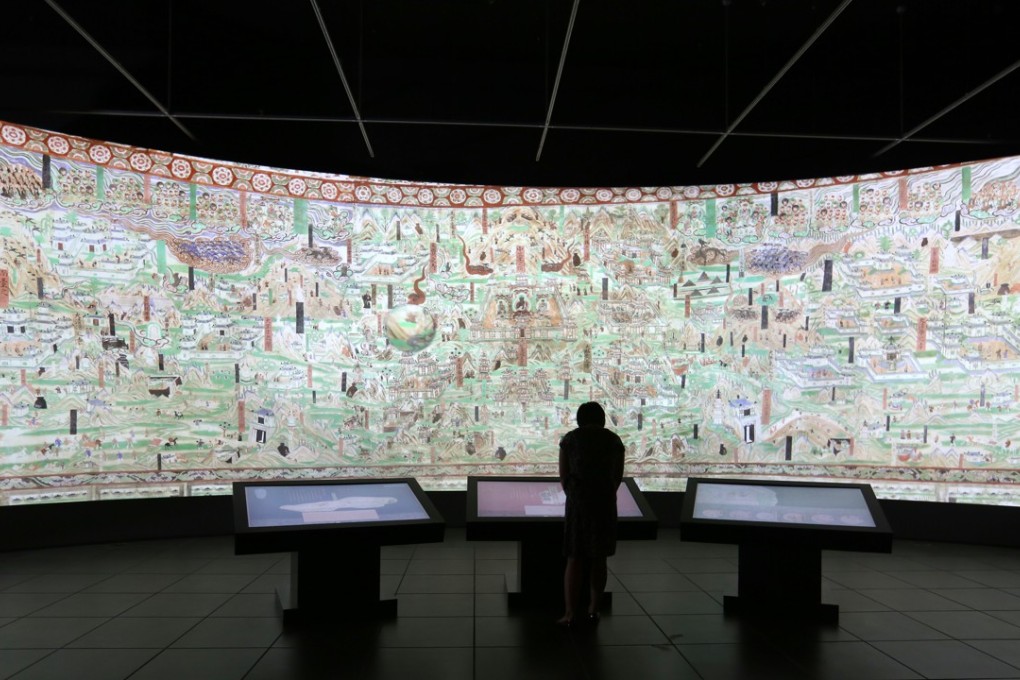How 3D imagery of Dunhuang Silk Road cave paintings helps preserve Unesco site and shows murals in new light
Exhibition ‘Digital Dunhuang – Tales of Heaven and Earth’ at Hong Kong Heritage Museum brings famous Mogao cave art to life, and allows public to appreciate murals from caves where visits are highly restricted

For many people travelling along the route of the ancient Silk Road in China, the highlight is the Mogao Caves at Dunhuang containing the world’s most exquisite Buddhist murals.
Created between the fourth and 14th centuries, there remain more than 700 caves. Carved into the cliffs above the Dachuan River, in Gansu province, 492 of them are decorated with more than 45,000 square metres of murals and about 2,000 painted sculptures. Some show Buddhist imagery; others depict the daily lives of everyone from farmers to aristocrats.
Not everyone can make the journey to Dunhuang, in the country’s northwest – and nor do they need to any more, thanks to work by the Dunhuang Academy and its collaboration with a number of scientific research institutions since the 1990s.
One such partnership has produced an exhibition at the Hong Kong Heritage Museum – “Digital Dunhuang – Tales of Heaven and Earth” – which showcases efforts to preserve the art of the Mogao Caves by using 3D technology to digitally scan them.
“The climate in Dunhuang is arid, [with] lots of sandy winds, so this environmental factor has long affected the safety of the murals and sculptures inside the caves,” says Fion Lin Hoi-yan, an assistant curator at the museum in Sha Tin, in Hong Kong’s New Territories.
“And also in recent years, there have been a lot of visitors to Dunhuang, and when they visit the caves it increases the temperature, humidity and carbon dioxide inside the caves, which affect the murals.”